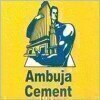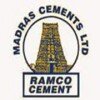Filter interviews by
Maharashtra Seamless Electrical Engineer Interview Questions, Process, and Tips
Maharashtra Seamless Electrical Engineer Interview Experiences
2 interviews found
I applied via Naukri.com and was interviewed before May 2023. There was 1 interview round.
(2 Questions)
- Q1. Tell me about your self
- Q2. What is your responsibility within the plant?
- Ans.
As an Electrical Engineer, my responsibility within the plant includes designing, testing, and maintaining electrical systems to ensure smooth operations.
Designing electrical systems for optimal plant operations
Testing and troubleshooting electrical equipment to ensure functionality
Maintaining electrical systems to prevent downtime and ensure safety
Collaborating with other engineers and plant personnel to address elect...
Interview Preparation Tips
Don't be hesitate during answering.
Interview Questionnaire
3 Questions
- Q1. What is TPM?
- Ans.
TPM stands for Trusted Platform Module, a hardware-based security feature that provides secure storage and cryptographic functions.
TPM is a chip or integrated circuit that is used to secure and protect sensitive data on a computer system.
It provides a secure environment for storing encryption keys, passwords, and digital certificates.
TPM can be used for various security applications such as disk encryption, secure boot...
- Q2. What is 5S?
- Ans.
5S is a methodology used to organize and maintain a clean and efficient workplace.
5S stands for Sort, Set in Order, Shine, Standardize, and Sustain.
Sort involves removing unnecessary items from the workplace.
Set in Order focuses on arranging necessary items in a logical and efficient manner.
Shine involves cleaning and maintaining the workplace.
Standardize establishes consistent processes and procedures.
Sustain ensures ...
- Q3. What is seiri?
- Ans.
Seiri is a Japanese term that refers to the practice of sorting and organizing items in a systematic manner.
Seiri is part of the 5S methodology, which aims to improve efficiency and productivity in the workplace.
It involves removing unnecessary items from the workspace and organizing the remaining items in a logical and accessible manner.
By implementing seiri, electrical engineers can easily locate tools, equipment, an...
Interview Preparation Tips
Top trending discussions






Interview questions from similar companies

Electrical Engineer Interview Questions & Answers
Dalmia Bharat Cementposted on 21 Dec 2024
I applied via LinkedIn and was interviewed before Dec 2023. There was 1 interview round.
(2 Questions)
- Q1. What is the process of power distribution?
- Ans.
Power distribution is the process of delivering electricity from power plants to consumers through a network of transmission and distribution lines.
Electricity is generated at power plants using various sources such as coal, natural gas, nuclear, or renewable energy.
The electricity is then transmitted at high voltages over long distances through transmission lines to substations.
At substations, the voltage is reduced a...
- Q2. What are the different types of sources of electricity?
- Ans.
Different types of sources of electricity include fossil fuels, nuclear power, renewable energy sources, and batteries.
Fossil fuels (coal, oil, natural gas)
Nuclear power
Renewable energy sources (solar, wind, hydro, geothermal)
Batteries (lithium-ion, lead-acid)

Electrical Engineer Interview Questions & Answers
Dalmia Bharat Cementposted on 17 Jan 2021
Interview Questionnaire
4 Questions
- Q1. 1. Induction motor starting principle
- Ans.
The induction motor starting principle is based on the creation of a rotating magnetic field.
An induction motor starts by applying a voltage to the stator windings, creating a rotating magnetic field.
The rotating magnetic field induces currents in the rotor windings, which in turn creates a magnetic field.
The interaction between the stator and rotor magnetic fields causes the rotor to start rotating.
Different methods l...
- Q2. 2. Describe about transformer parts.
- Ans.
Transformer parts include core, windings, insulation, and cooling system.
The core is made of laminated iron or steel and provides a path for magnetic flux.
Windings consist of primary and secondary coils, which are insulated copper wires.
Insulation materials like paper, varnish, or oil are used to insulate the windings.
Cooling systems such as fans, radiators, or oil pumps are used to dissipate heat.
Other parts include b
- Q3. 3. How over current protection, differential protection and earth fault protection work.
- Ans.
Over current protection, differential protection, and earth fault protection are methods used to safeguard electrical systems.
Over current protection is used to detect and interrupt excessive current flow in a circuit.
Differential protection compares the current entering and leaving a component to detect faults.
Earth fault protection detects current leakage to the earth and isolates the faulty circuit.
Over current prot...
- Q4. 4. Cable construction and its layer.
- Ans.
Cable construction involves multiple layers for insulation and protection.
Cables are typically constructed with multiple layers for insulation and protection.
The innermost layer is the conductor, usually made of copper or aluminum.
The next layer is the insulation, which can be made of materials like PVC, polyethylene, or rubber.
Additional layers may include shielding to protect against electromagnetic interference.
The ...

I applied via Naukri.com and was interviewed in Jun 2021. There were 5 interview rounds.
Interview Questionnaire
2 Questions
- Q1. Types of motor
- Ans.
There are various types of motors used in electrical engineering, including AC motors, DC motors, stepper motors, and servo motors.
AC motors: Alternating current motors that are commonly used in household appliances and industrial machinery.
DC motors: Direct current motors that are often used in battery-powered devices and electric vehicles.
Stepper motors: Motors that move in discrete steps and are commonly used in rob...
- Q2. 2 types of motor generally used in plant
- Ans.
The two types of motors generally used in plants are AC motors and DC motors.
AC motors are commonly used for high-power applications and are more efficient.
DC motors are often used for low-power applications and provide better speed control.
Examples of AC motors include induction motors and synchronous motors.
Examples of DC motors include brushed DC motors and brushless DC motors.
Interview Preparation Tips

I applied via Recruitment Consultant and was interviewed in Nov 2021. There was 1 interview round.
Interview Questionnaire
1 Question
- Q1. How to Lrs and grr working principal
- Ans.
LRS and GRR are not commonly used acronyms in the field of electrical engineering.
LRS and GRR are not widely known acronyms in the electrical engineering field.
There is no specific working principle associated with LRS and GRR as they are not commonly used terms.
It is possible that LRS and GRR are specific to a certain company or industry, in which case their working principles would need to be explained within that co
Interview Preparation Tips


(1 Question)
- Q1. Electrical engineering related questions
(1 Question)
- Q1. Tell me about yourself.
Interview Preparation Tips

I applied via Naukri.com and was interviewed in Nov 2021. There was 1 interview round.
Interview Questionnaire
1 Question
- Q1. About electrical equipment protection,
Interview Preparation Tips

I applied via Newspaper Ad and was interviewed before Nov 2021. There were 2 interview rounds.

(2 Questions)
- Q1. What is your previous salary
- Q2. Tell about yourself and family
Interview Preparation Tips

I applied via Walk-in and was interviewed before Feb 2023. There was 1 interview round.
(1 Question)
- Q1. Written exams with all basic technical questions
Interview Preparation Tips
Maharashtra Seamless Interview FAQs
Tell us how to improve this page.
Maharashtra Seamless Interviews By Designations
- Maharashtra Seamless Assistant Engineer Interview Questions
- Maharashtra Seamless Junior Engineer Interview Questions
- Maharashtra Seamless Electrical Maintenance Engineer Interview Questions
- Maharashtra Seamless Electrical Engineer Interview Questions
- Maharashtra Seamless Executive Interview Questions
- Maharashtra Seamless Graduate Engineer Trainee (Get) Interview Questions
- Maharashtra Seamless PPC Engineer Interview Questions
- Maharashtra Seamless Senior Fitter Interview Questions
- Show more
Interview Questions for Popular Designations
- Electrical Supervisor Interview Questions
- Junior Engineer Electrical Interview Questions
- Electrical Technician Interview Questions
- Assistant Electrical Engineer Interview Questions
- Electrical Maintenance Engineer Interview Questions
- Diploma Electrical Engineer Interview Questions
- Manager – Electrical Interview Questions
- Electrical Maintenance Technician Interview Questions
- Show more
Maharashtra Seamless Electrical Engineer Interview Process
based on 1 interview
Interview experience
Interview Questions from Similar Companies
Maharashtra Seamless Electrical Engineer Reviews and Ratings
based on 10 reviews
Rating in categories
|
Junior Engineer
130
salaries
| ₹1.8 L/yr - ₹5 L/yr |
|
Assistant Engineer
99
salaries
| ₹2 L/yr - ₹6.5 L/yr |
|
Senior Engineer
77
salaries
| ₹5 L/yr - ₹10.5 L/yr |
|
Engineer
69
salaries
| ₹2.2 L/yr - ₹8.4 L/yr |
|
Production Engineer
60
salaries
| ₹2.1 L/yr - ₹6.6 L/yr |

JK Cement

ACC

Shree Cement

Dalmia Bharat Cement
- Home >
- Interviews >
- Maharashtra Seamless Interview Questions >
- Maharashtra Seamless Electrical Engineer Interview Questions















